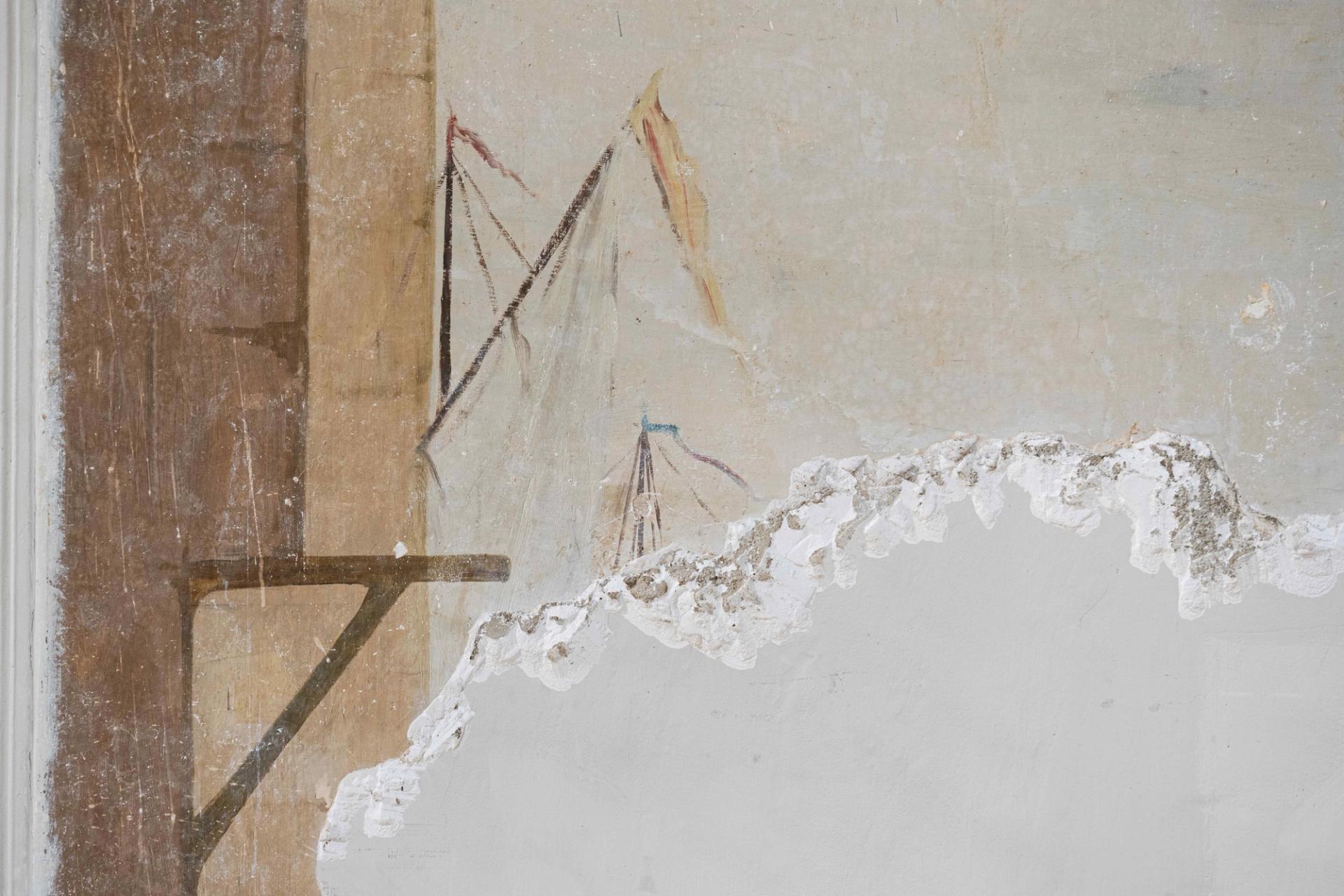A previously unknown composition by the French painter Paul Cézanne has been discovered as part of renovations to his childhood home, Bastide du Jas de Bouffan, in Aix-en-Provence, France. The 12.3-acre property, which was bought by the artist’s father Louis-Auguste Cézanne in 1859, is being transformed ahead of a programme celebrating the artist and his connection to Aix.
The discovery was made in August 2023 in the Grand Salon, the main living area in the house. Until that point, only nine paintings had been identified in this space—all of them painted directly onto the walls between 1859 and 1869. After Cézanne and his sisters Rose and Marie sold Bastide du Jas de Bouffan to the Granel-Corsy family in 1899, these works—which include “Le Baigneur au rocher” (Bather and the Rocks), a composition after Dutch artist Jacob Van Ruysdael—were transferred to canvases and gradually distributed to institutions such as the Petit Palais and Musée d’Orsay in Paris; the Chrysler Museum of Art in Norfolk, US; and the Nakata Museum in Onomichi, Japan. All nine feature in John Rewald’s 1996 catalogue raisonné of Cézanne’s works.
Last August, pieces of an unknown composition were found under layers of wallpaper and plaster. The mural depicts floating pennons, masts, a sky that stretches across the upper part of the wall, and architectural elements running along the sides. Cézanne drew inspiration from artists gone by when painting his other panels, and this maritime scene, referred to as Entrée du port (Entrace to the Port), may have been influenced by Claude-Joseph Vernet or Claude Lorrain. Cézanne is believed to have partially painted over it with the work Jeu de cache-cache (Game of Hide & Seek) (1864)—a reinterpretation of a scene by Nicolas Lancret—soon after visiting Paris’s 1863 Salon des Refusés, the exhibition of works rejected by the jury of the city’s official Salon. The Granel family is then understood to have covered the remaining edges when they moved in.

A detail of the mural, depicting what appear to be the masts of ships
Photo: © Ville d'Aix-en-Provence / Philippe Biolatto
The discovery puts into question the order in which the panels in the Grand Salon are believed to have been painted. It also offers the city of Aix-en-Provence, which has for a long time not held a single painting by its local hero, its first Cézanne treasure. The work will soon be added to the updated, online version of Rewald’s 1996 inventory.
Are further discoveries expected? “We have checked everywhere. We don’t expect to find anything else,” says Denis Coulagnes, the president of the Société Paul Cézanne association. He is eager to see the Jas de Bouffan turned into a research centre, with an auditorium and a restaurant, by next year.


